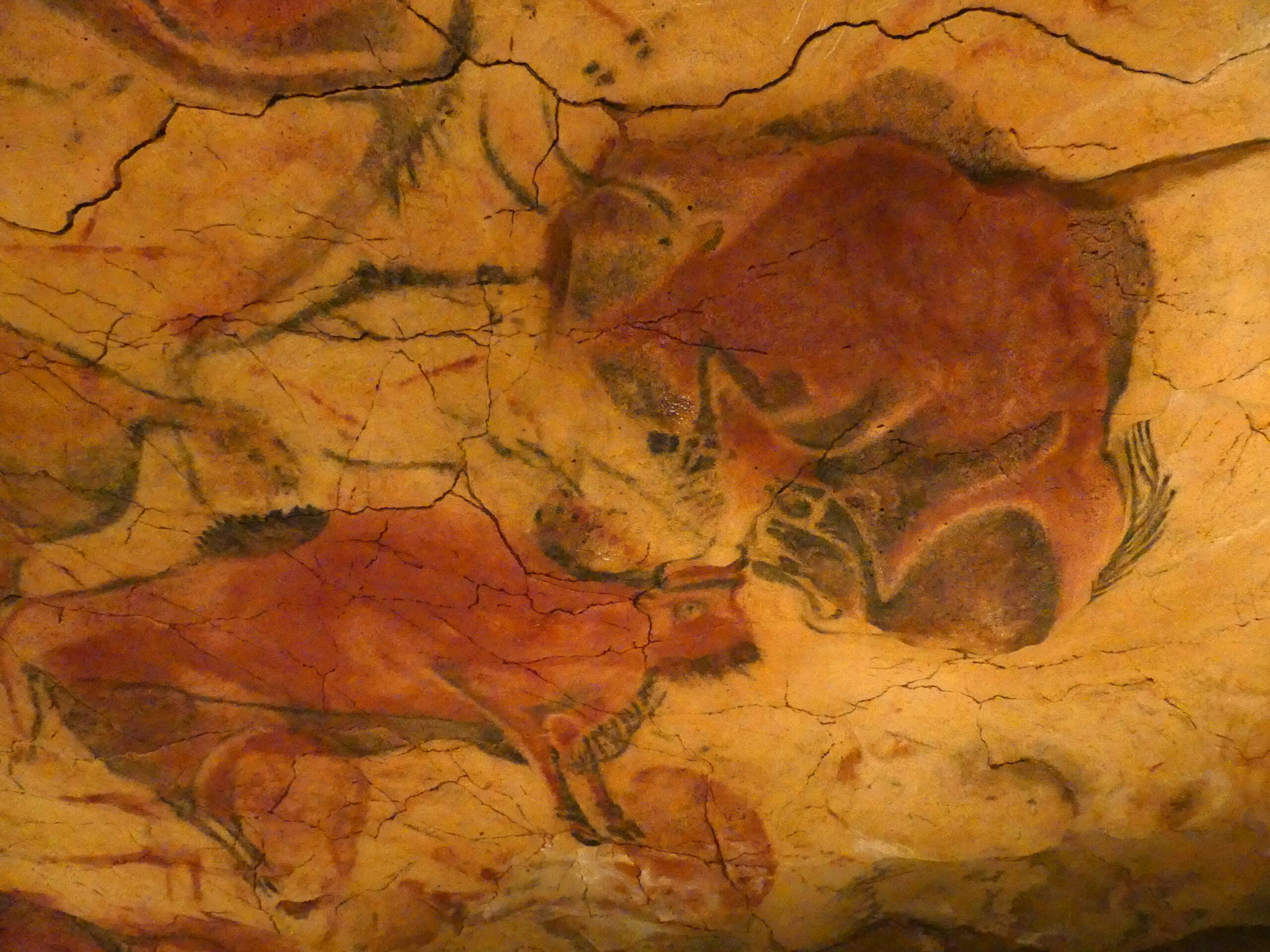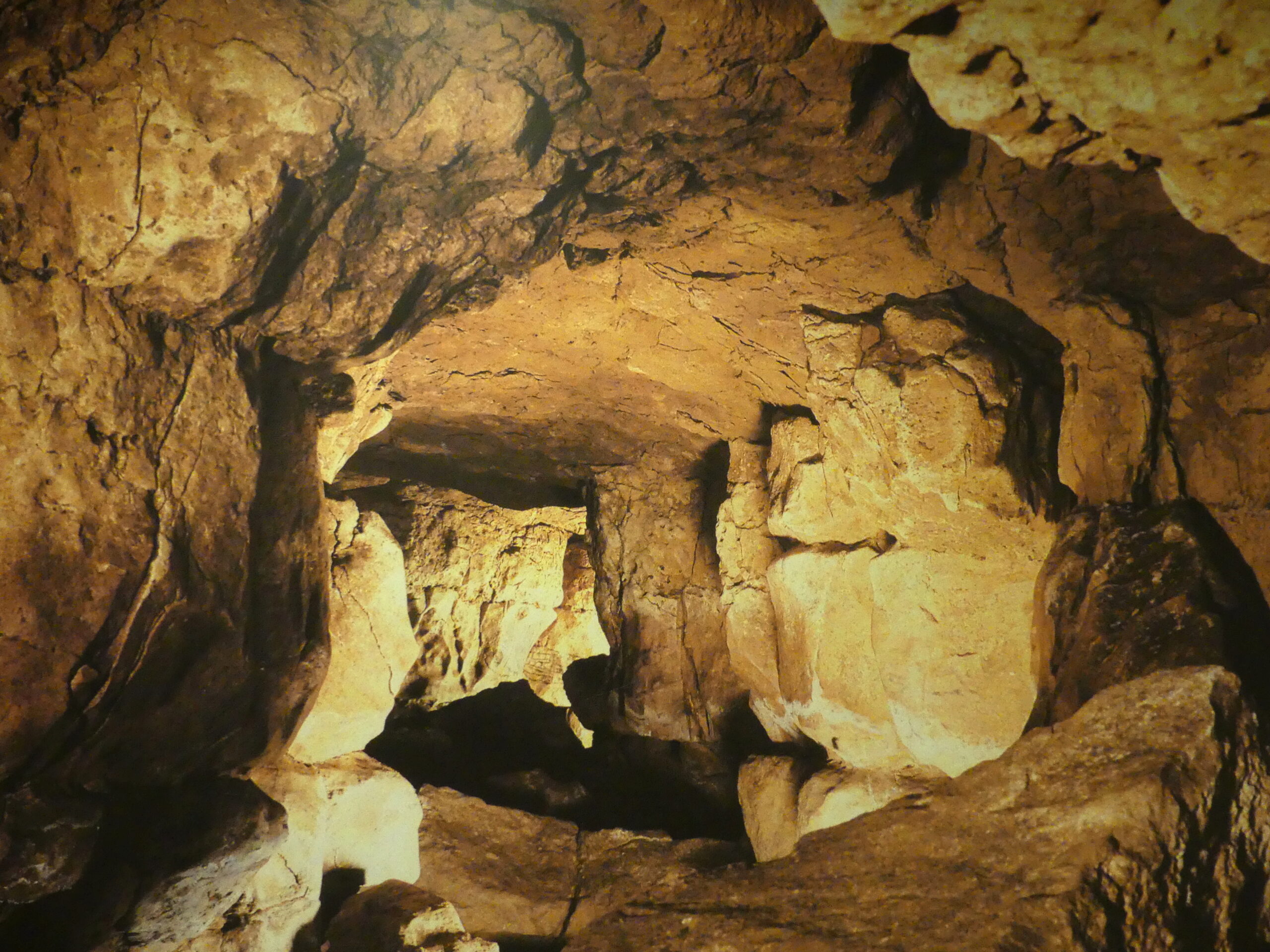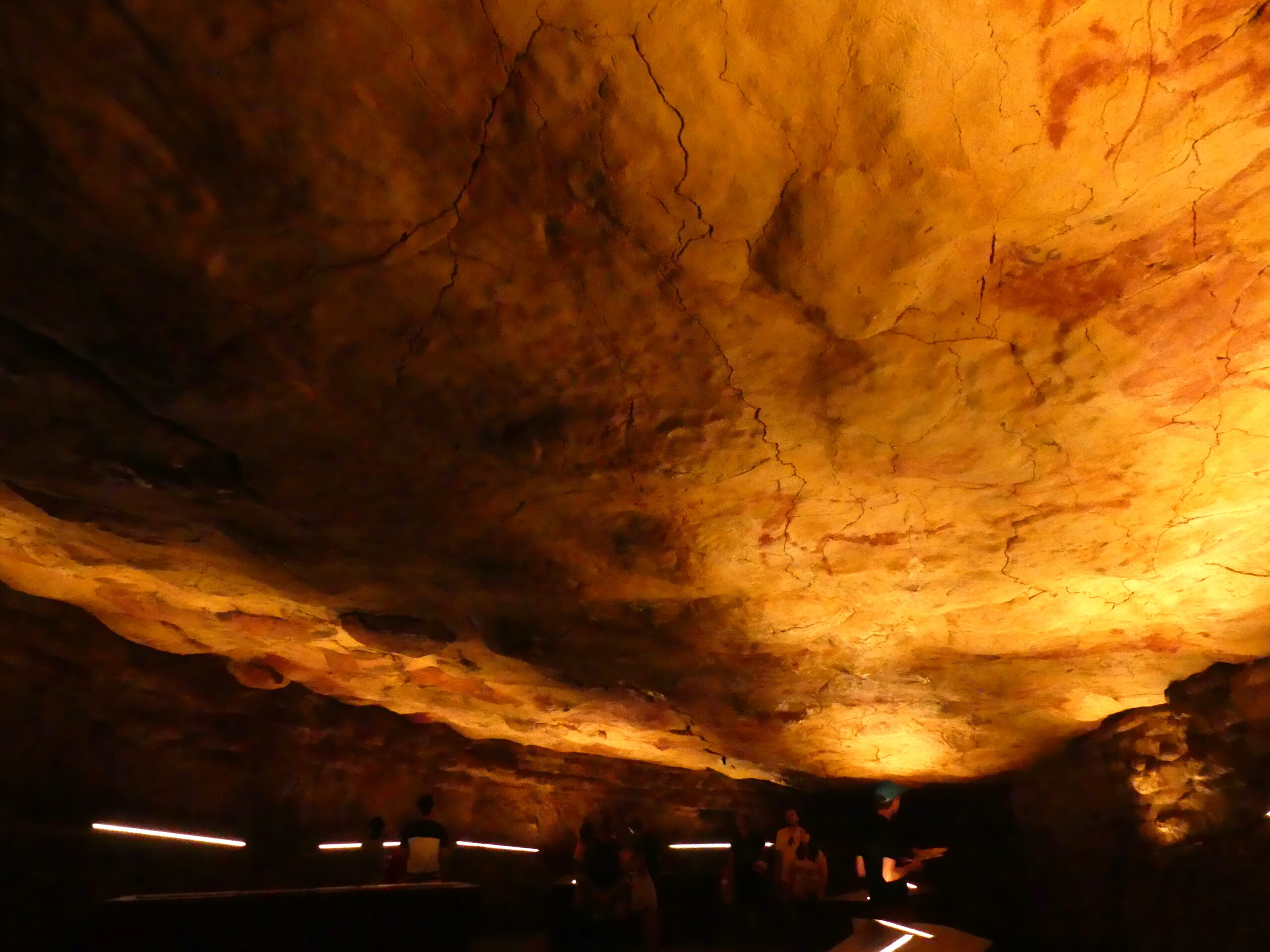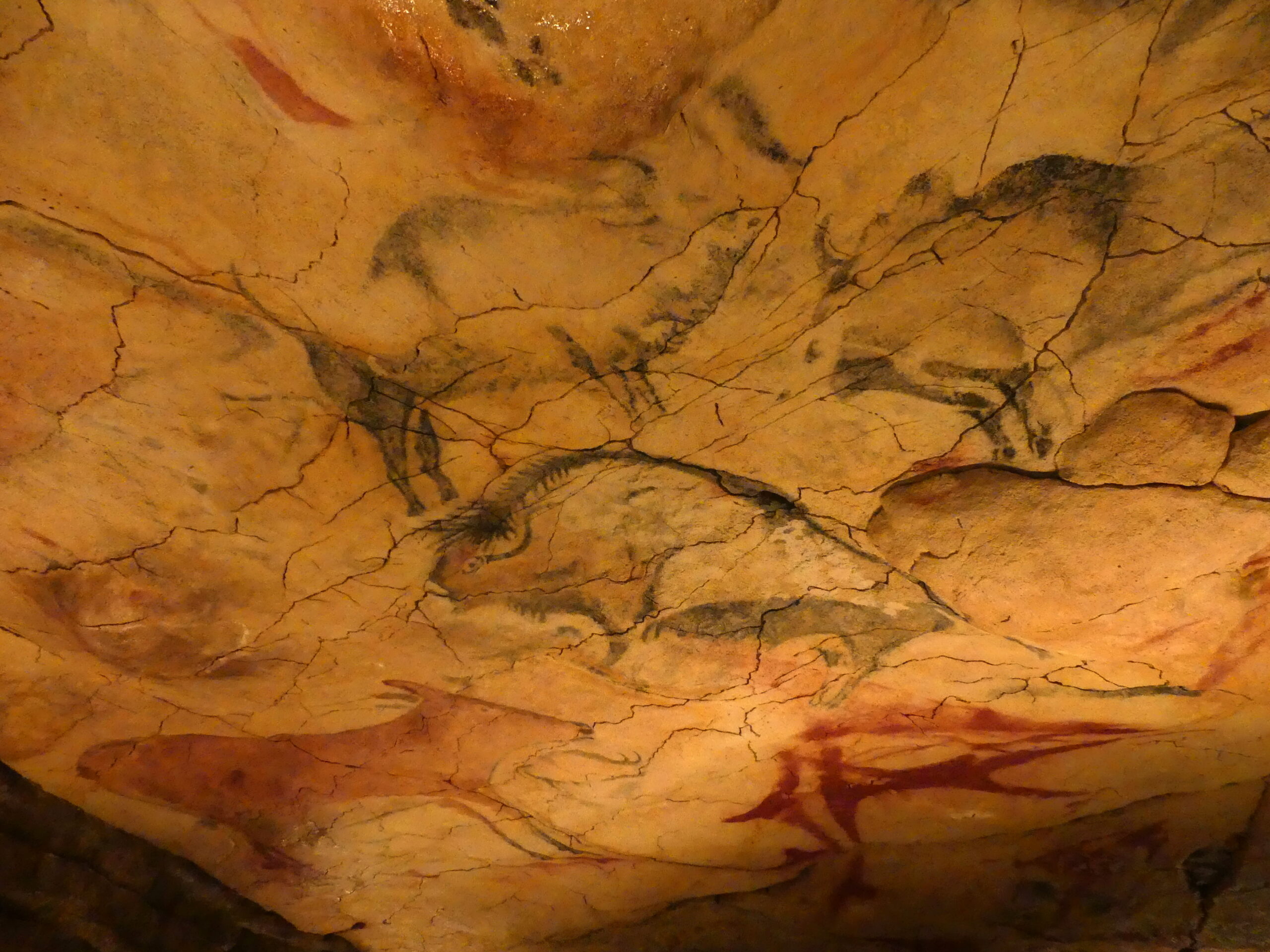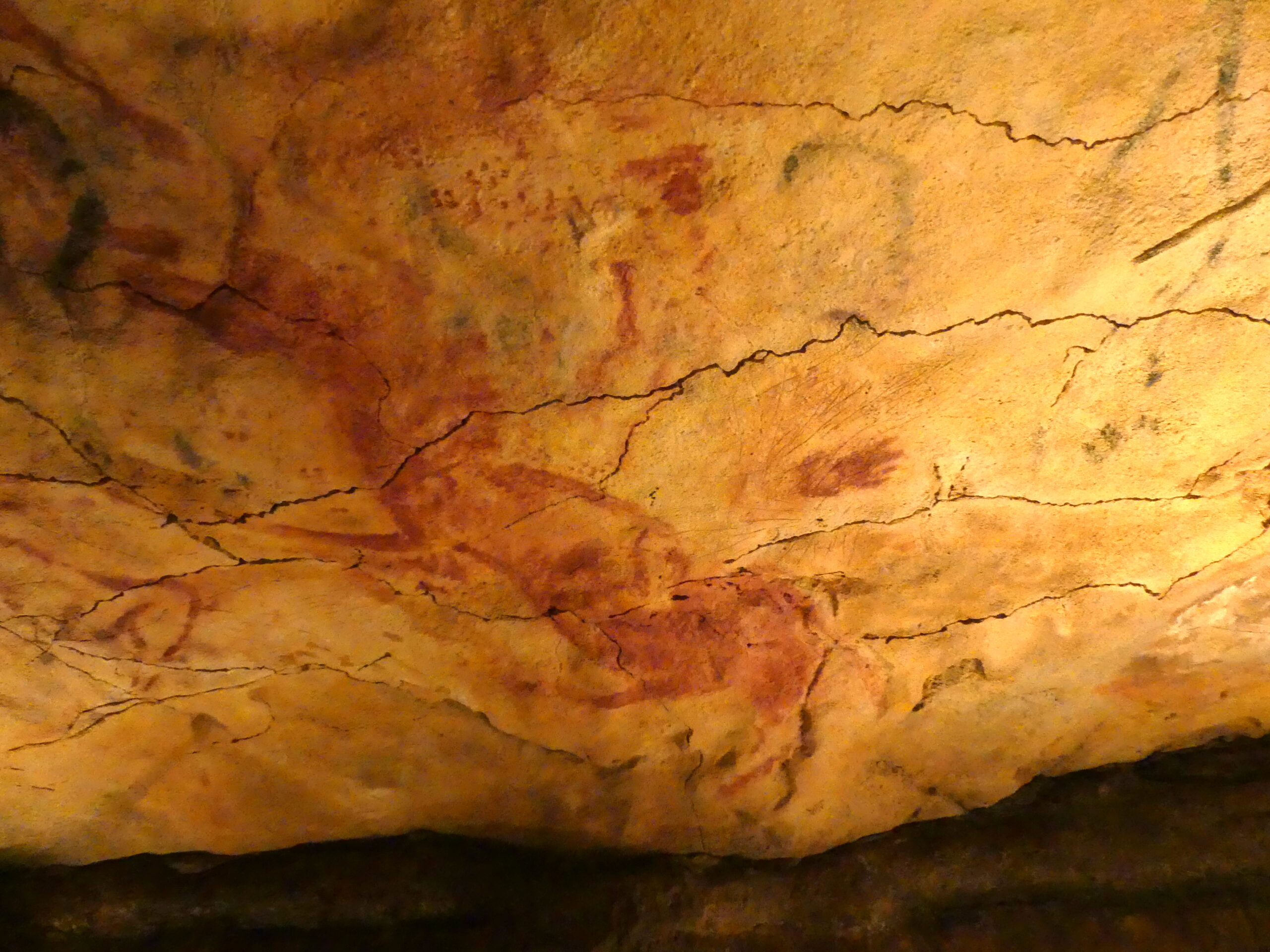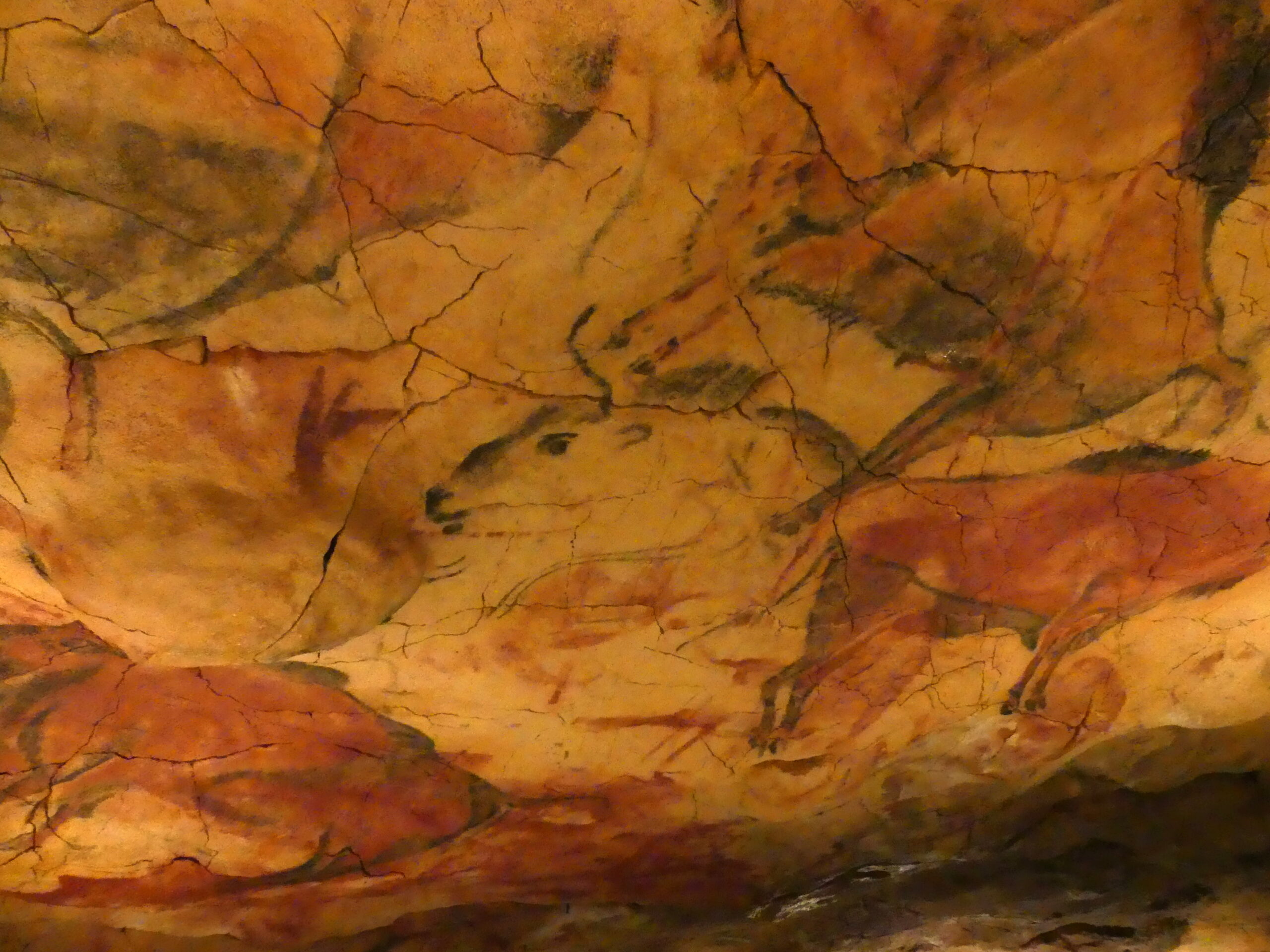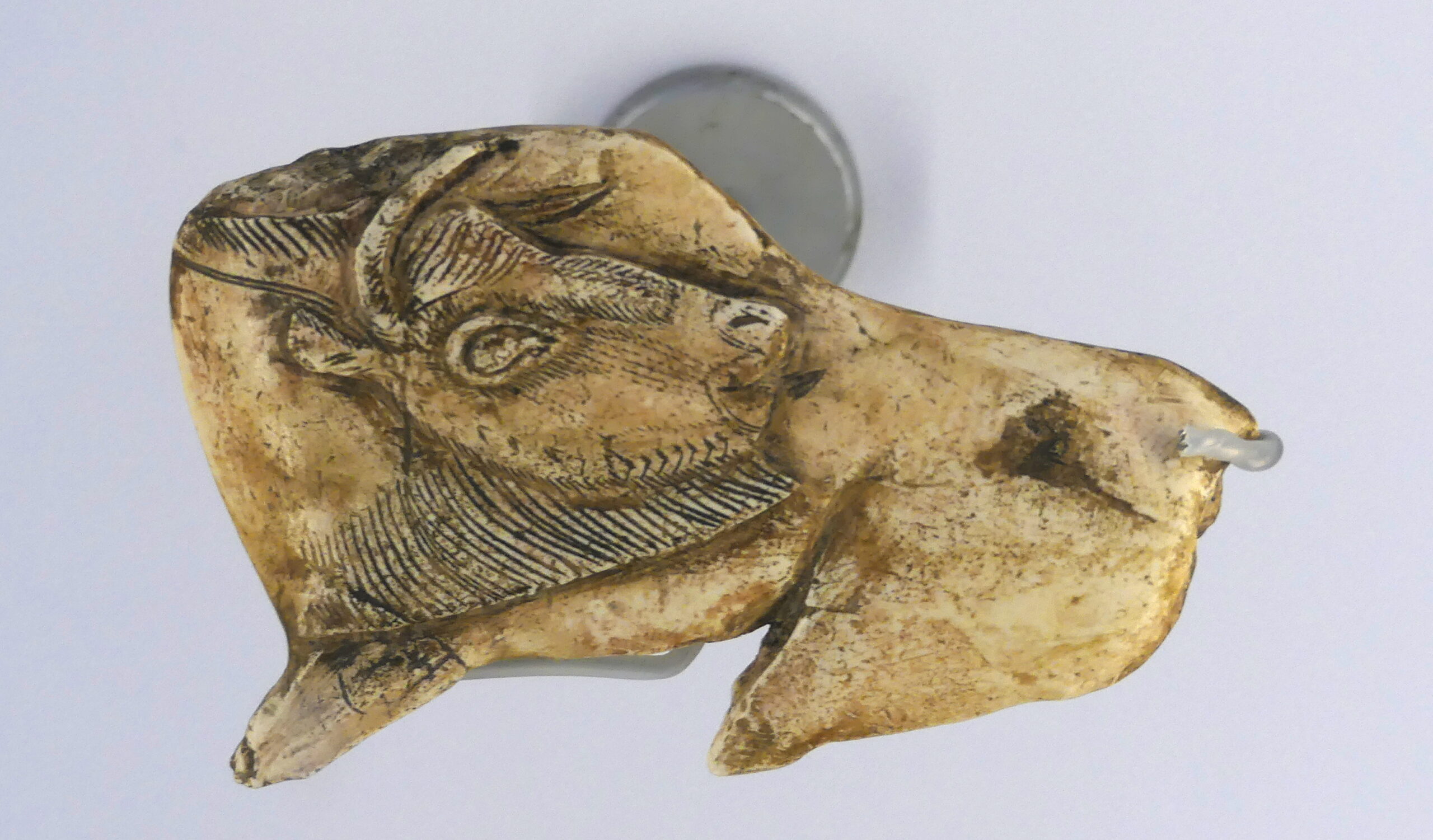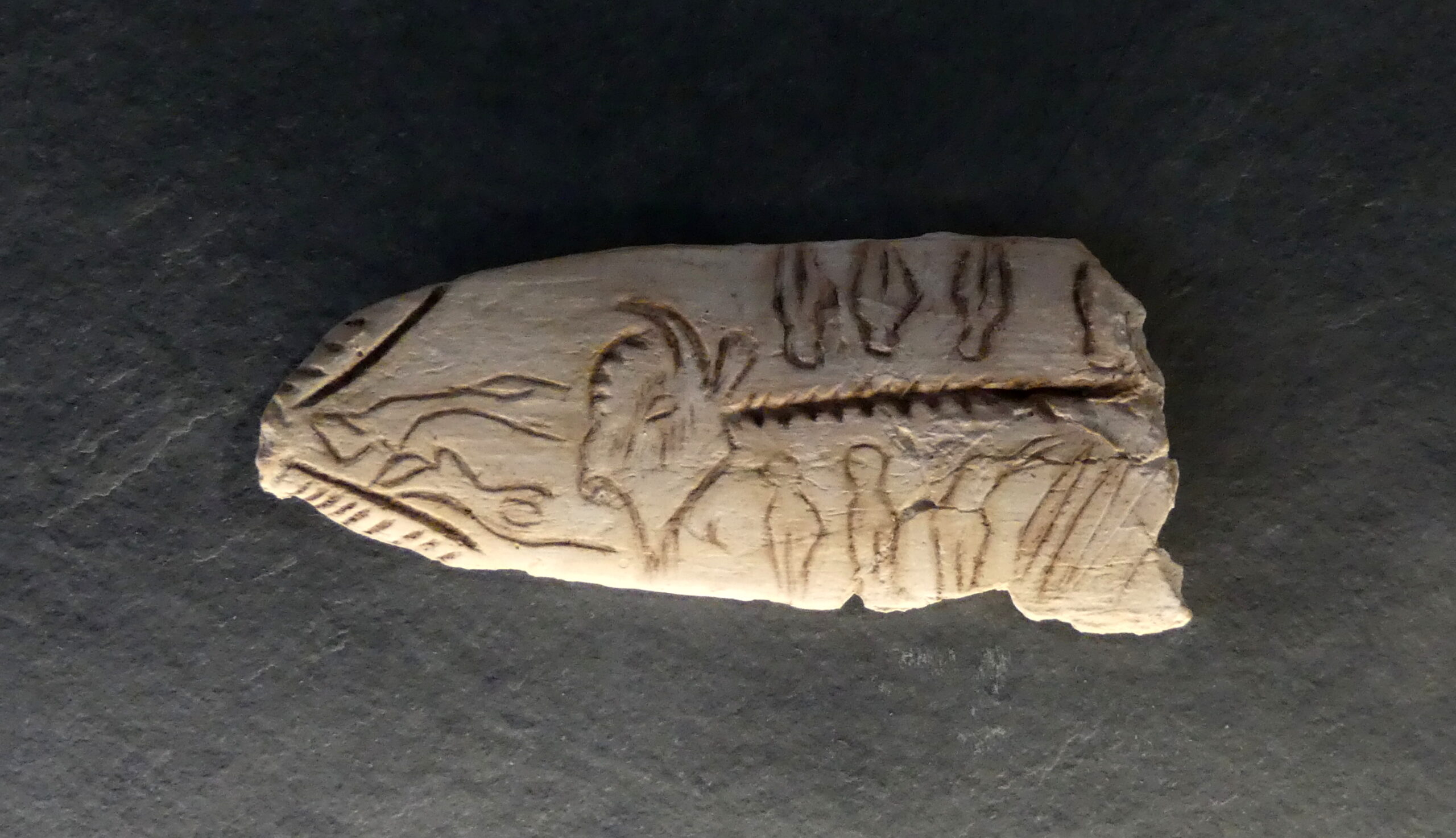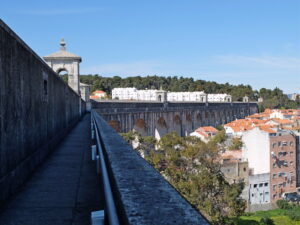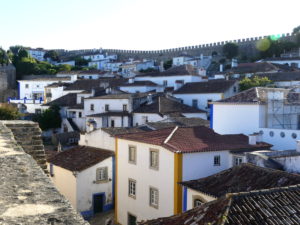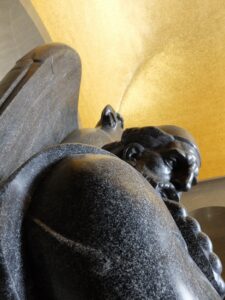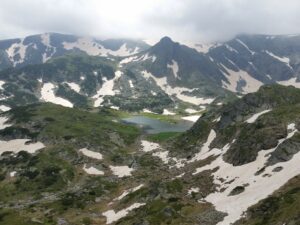In brief: Was it worth a long trip to see just a copy of famous paintings from tens of thousands of years ago? The experience, we found, proved well worth it.
No one believed him.
In the 1870s, amateur archeologist Marcelino de Sautuola was investigating the caves of Altamira, in northwest Spain. On the roof of one, he found evidence of the sophisticated artistry of prehistoric cave dwellers. That wasn’t possible, skeptics asserted, for Paleolithic man was much too primitive, incapable of such perceptive and graphic craft. But, by the time others explored the French caves of Lascaux in the early 1900s, his case was proven.
As thousands and thousands of visitors flocked to Altamira to gawk at this “Sistine Chapel” of cave art, as one expert put it, their presence began to destroy the 10 to 25000-year old paintings, which had survived due to the constant atmosphere of the cave.
So the cave was all but closed, admitting just 5 people per week selected by lottery from a waiting list that was filled a decade ago. Instead, as at Lascaux, archeologists and artisans recreated the cave so we could admire the paintings without harm.
This photo of a photo shows the entrance to the real cave of Altamira. One advantage of viewing a copy is that we did not have to duck down to reach the paintings at the replica.
De Sautuola himself found other caves with drawings, and contemporary exploration continues, though no others have been as fine as Altamira’s.
The replica overhang from the cave at Altamira measures about 5 by 10 meters (17 by 35 feet), compared to the length of the original at 300 meters. It is also higher for easier access. The archeologists replicated the dim interior lighting you’d experience in a visit to the actual cave. Here you can see some of the figures dimly on the right, but the best drawings follow.
In recreating Altamira, they constructed a similar surface, lumpy limestone and all, and used the same techniques that the original artists used.
One of the best examples consists of these two bison from about 16000 years ago. The figure on the right is not only lying down, facing left, but occupies a natural bulge in the ceiling that gives it three-dimensional bulk. The detail of the legs and hair below the body is extraordinary, but the figure almost seems alive due to its elongated bearded face and other hairy features. The painter used chalk to outline the figures, carved into the surface for more definition, spread the ochre color onto the body by hand, then finished the fine detail such as the hair with charcoal. So did those who re-created the images.
The four bison in the upper central portion of this picture all seem to have distinct personalities, though two have faded badly. And the bulge at the right seems to have been another recumbent bison.
To the lower left is a deer from about 16000 years ago which has been thought to carry a baby deer due to the ceiling bulge where its belly is painted. One deer in the original cave measures about 2 meters long (6.5 feet)! To the lower right, a symbolic character appears. Such abstract signs are among the oldest of the paintings, made about 24000 years ago.
Two deer running to the upper left occupy the lower center of this section, with the back end of a horse at the lower left, but we were most interested in the handprint just to the right of the deer.
Perhaps the artist, after painting the bodies red with his hand, just felt the whim to sign his work by pressing his red hand against the surface. This recalled to us the most amazing original cave paintings we had seen in the desert of Patagonian Argentina, with thousands and thousands of hands that celebrated the whole community.
A large herd teems on this section of the ceiling. The body of the one whose head is in the center was overpainted by the back end of another bison. But it’s distinctive for its use of charcoal outlining applied with lighter and heavier touches, just like the methods in modern charcoal drawing. It also engraves part of the figure in the surface like many of the paintings here.
In the Altamira museum, other replicas aim to show the techniques and artistic range of the Paleolithic artists. One tiny replica of prehistoric art was this magnificent bone carving found in the Madeleine Cave in France and dating from 15 to 20000 years ago.
The roughly depicted body might have worn away some during the years, but we gasped at the elaborately detailed head magnificently twisted behind.
Another tiny replica of the artistry is the Rib of Raymonden, a copy of a 15000 year old engraving from France.
In a miniature of less than ten centimeters, it depicts a group of people on the right standing above and below the skeleton of a bison whose head is in the middle.
Before going to Altamira, we debated the value of seeing a “copy,” but found that experiencing such a fine interpretation of the original – and the other illustrative artifacts – was well worth the trip. Thank you, Señor de Sautuola.
(To enlarge any picture above, click on it. Also, for more pictures from Spain, CLICK HERE to view the slideshow at the end of the itinerary page.)


